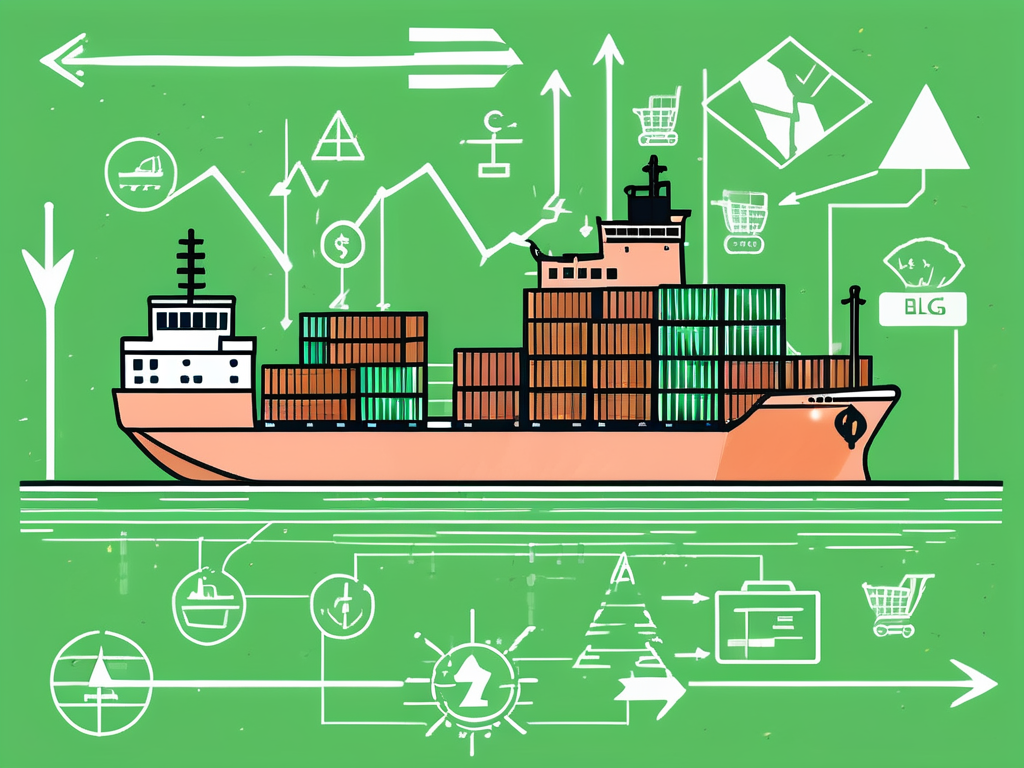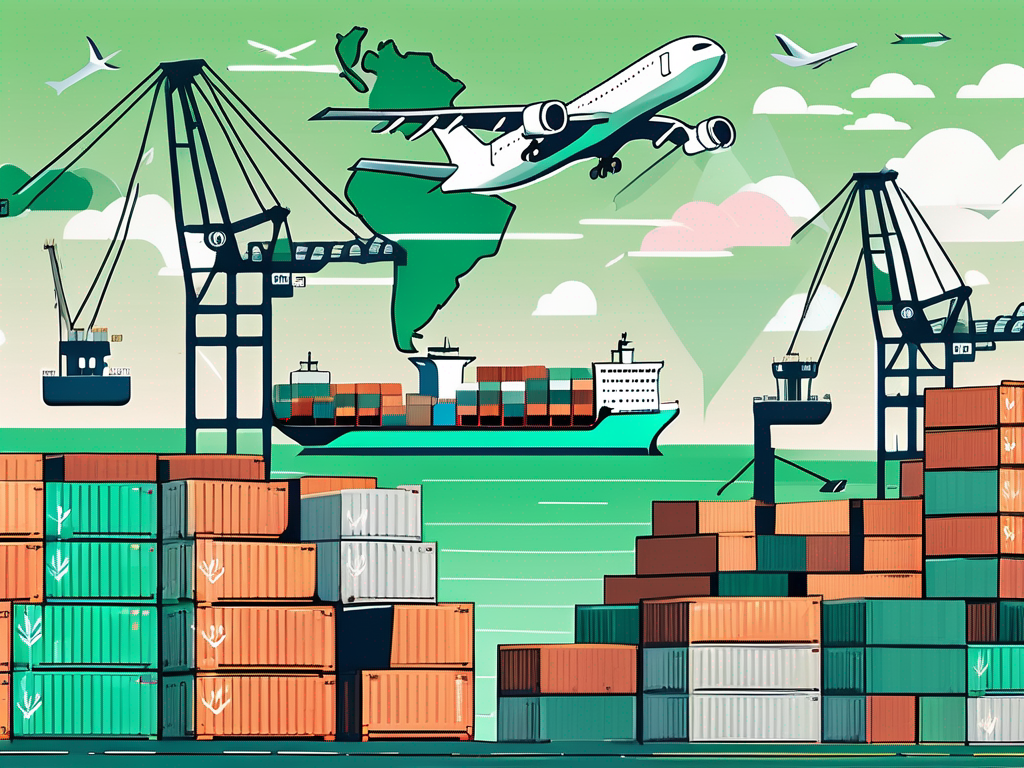Share this
How to Negotiate Carrier Contracts In 2025
by Shipfusion Team on Oct. 29, 2024

The importance of effectively negotiating carrier contracts will reach a new level in 2025. Shifting market dynamics necessitate a more strategic approach – especially for businesses relying heavily on logistics and transportation. This article highlights what’s at stake over the coming year and provides tips on making the most of negotiations with carriers.
Factors Set to Define Carrier Contracts In 2025
The volatility of carrier costs continues to be a pressing issue for businesses. Factors such as fuel price fluctuations, labor shortages, and increased demand for freight services have led to unpredictable pricing. For instance, transport companies may increase their rates due to rising operational costs, affecting budgets across various sectors.
Additionally, the availability of carriers has changed significantly. A surge in ecommerce has strained capacity, leaving businesses to scramble for reliable services. As a result, organizations must proactively engage in negotiations to secure not only cost-effective rates but also guaranteed availability, which may involve forming relationships with multiple carriers to mitigate risks associated with reliance on a single provider.
Furthermore, the rise of digital platforms and technology-driven logistics solutions has transformed the landscape of carrier negotiations. Companies now have access to real-time data, allowing them to analyze carrier performance and market trends more effectively. This data-driven approach enables businesses to make informed decisions, ensuring they select carriers that not only meet their budgetary constraints but also align with their service level expectations. By leveraging technology, organizations can negotiate from a position of strength, armed with insights that can lead to more favorable terms and conditions.
The Impact of Global Disruptions on Shipping Contracts
Events such as pandemics, geopolitical tensions, and natural disasters have underscored the fragility of supply chains. For example, during the COVID-19 crisis, many companies faced shipping delays and increased tariffs, prompting a reassessment of existing agreements. As a result, businesses must consider these global uncertainties when negotiating contracts, prioritizing flexibility and reliability.
Shippers should focus on the ability of carriers to manage disruptions rather than solely assessing prices. Options for expedited services or contingency plans need to be part of the negotiations to safeguard against unforeseeable challenges. This approach ensures that businesses can adapt to changing circumstances quickly and efficiently. Moreover, as sustainability becomes a critical concern for consumers and regulators alike, companies are increasingly looking for carriers that prioritize eco-friendly practices. Negotiating with carriers who are committed to reducing their carbon footprint can not only enhance a company's reputation but also align with broader corporate social responsibility goals.
In this context, it’s essential for businesses to engage in discussions about sustainable logistics solutions, such as using alternative fuels or optimizing routes to minimize emissions. This not only addresses the growing consumer demand for green practices but also prepares companies for potential regulatory changes that may arise in the future. By incorporating sustainability into carrier negotiations, businesses can create a more resilient and responsible supply chain that is better equipped to navigate the complexities of the modern market.
What Are the Key Factors to Consider When Negotiating Carrier Contracts?
When entering negotiations for carrier contracts, several elements warrant careful consideration. Strategic planning, thorough research, and clear objectives will guide discussions toward beneficial agreements. Organizations should approach these negotiations with a comprehensive understanding of their needs and the broader market to achieve optimal outcomes.
Balancing Service Levels with Costs
Finding a carrier that meets both service expectations and financial requirements is a complex task. Businesses must evaluate carriers on multiple criteria, including delivery times, damage rates, and responsiveness. While lower costs may be tempting, they can compromise service quality, leading to missed deadlines and customer dissatisfaction.
For example, a logistics company might offer reduced rates but fail to deliver on time, affecting an organization’s reputation. It's essential to establish performance metrics that align with company objectives while negotiating. By emphasizing service reliability, firms can identify carriers that provide a suitable balance between cost and quality.
Additionally, businesses should consider the technological capabilities of potential carriers. In today's fast-paced market, the ability to track shipments in real-time and access data analytics can significantly enhance operational efficiency. A carrier that invests in technology can provide valuable insights into logistics performance, allowing companies to make informed decisions and adjustments as needed. By prioritizing carriers that offer advanced tracking systems and customer support, organizations can ensure a smoother supply chain experience.
Locking in Rates Amidst Market Volatility
Market fluctuations are a reality that every business faces. During negotiations, it is advantageous to explore agreements that allow for fixed rates over a specified period. This not only provides financial predictability but also aids in budgeting and planning.
However, it’s also essential to include clauses that allow for adjustments based on predetermined conditions, such as fuel surcharges or seasonal increases in demand. These terms can provide a safety net against sudden price hikes while ensuring that carriers remain focused on service levels.
Moreover, understanding the broader economic indicators that influence shipping rates can empower businesses during negotiations. Factors such as fuel prices, labor costs, and global trade policies can all impact carrier pricing structures. By staying informed about these trends, organizations can better anticipate changes and negotiate terms that are more favorable. This proactive approach not only strengthens the negotiation position but also fosters a more collaborative relationship with carriers, paving the way for long-term partnerships that can adapt to changing market conditions.
How to Build a Strong Negotiation Strategy for 2025
To thrive in 2025 and beyond, companies need to adopt a robust strategy for negotiating carrier contracts. This approach should be data-driven, ensuring that decisions are backed by concrete insights from past performances and market analysis.
Data-Driven Approaches to Leverage During Negotiations
The effective use of data analytics can significantly enhance negotiation outcomes. By analyzing shipping patterns, costs, and carrier performances, businesses can identify areas for negotiation leverage. For instance, if a firm notices consistent delays from a specific carrier, they can use this information to negotiate terms that emphasize timely deliveries.
Moreover, having access to industry benchmarks allows companies to understand where they stand against competitors. This insight can be invaluable, enabling organizations to negotiate better rates by presenting evidence of market standards and expectations. Additionally, employing predictive analytics can help businesses forecast future shipping needs based on historical data, allowing for more strategic negotiations that align with anticipated demand fluctuations.
Managing Risk with Flexible and Long-Term Contracts
In a rapidly evolving shipping landscape, flexibility is essential. Consider structuring contracts that provide both short-term benefits and long-term stability. This hybrid approach allows businesses to respond quickly to immediate needs while also securing advantageous terms over a future period.
Incorporating flexibility in terms of service levels and pricing structures can mitigate risks associated with unforeseen disruptions. A well-negotiated contract could include provisions for alternate routes, volume adjustments, and even readjustments of key performance indicators as market conditions change. Furthermore, establishing clear communication channels with carriers can enhance collaboration, allowing for quicker adaptations to contract terms when necessary. This proactive stance not only strengthens relationships with carriers but also positions companies to navigate challenges more effectively, ensuring that both parties benefit from a mutually advantageous agreement.
How to Adapt and Evolve Your Carrier Strategy Post-2025
As market trends shift and new technologies emerge, businesses must continuously adapt their carrier strategies. A forward-thinking approach will help organizations stay competitive and responsive to changing demands.
Carrier Diversification
A diverse carrier portfolio is increasingly important as companies seek to prevent disruptions. By leveraging multiple transportation providers, businesses can maintain operational continuity even if one carrier encounters challenges. This diversification ensures flexibility and resilience in supply chains.
For example, using a mix of air, road, and sea cargo options can cover various customer needs and mitigate risks when certain shipping modes face constraints. Companies should routinely evaluate their carrier partnerships to determine if adjustments are necessary to keep pace with industry developments. Additionally, embracing emerging technologies such as real-time tracking and data analytics can provide valuable insights into carrier performance and market conditions, allowing businesses to make informed decisions about their logistics strategies.
Collaborating with Carriers to Strengthen Long-Term Relationships
Establishing strong partnerships with carriers can yield numerous benefits. Collaborative relationships foster transparency and open communication, allowing businesses to anticipate issues before they escalate. Engaging carriers in strategic discussions can lead to innovative solutions that benefit both parties.
Organizations may explore performance incentives or reward programs to motivate carriers to meet or exceed targets. Such partnerships not only enhance service delivery but also create a sense of shared investment in each other's success. By focusing on collaboration, companies enhance their competitive edge and adapt more effectively to ongoing changes in the logistics sector.
Furthermore, joint training sessions and workshops can be organized to align both parties on best practices and emerging trends, ensuring that both the business and its carriers are equipped to tackle the challenges of the future together. This proactive approach not only solidifies relationships but also drives continuous improvement across the supply chain.
Negotiate Carrier Contracts In 2025 Through Shipfusion
An industry-leading third-party logistics (3PL) company, Shipfusion helps ecommerce brands navigate the complexities of order fulfillment, inventory management, and returns management, while offering a smarter alternative to negotiating carrier contracts on your own. Our real-time extensive network of carriers can secure your business the best possible rates. Whether you’re managing growing return volumes or seeking to optimize your forward logistics, Shipfusion provides the tools and expertise to streamline operations, reduce costs, and enhance customer satisfaction.
Let us handle your logistics challenges, so you can focus on what matters most – growing your business. Contact Shipfusion today to start negotiating carrier contracts in 2025 from a position of strength.
Share this
You May Also Like
These Related Articles

How to Predict Carrier Rates 2025 and Beyond

Freight Surcharge: What It Means for Your Shipping Costs

A Cheat Sheet for Inexpensive Freight Shipping
- April 2025 (9)
- March 2025 (26)
- February 2025 (26)
- January 2025 (37)
- December 2024 (16)
- November 2024 (23)
- October 2024 (22)
- September 2024 (27)
- August 2024 (9)
- July 2024 (8)
- June 2024 (5)
- May 2024 (8)
- April 2024 (8)
- March 2024 (6)
- February 2024 (6)
- January 2024 (5)
- December 2023 (3)
- November 2023 (3)
- October 2023 (5)
- September 2023 (4)
- August 2023 (2)
- July 2023 (1)
- June 2023 (4)
- March 2023 (2)
- October 2022 (1)
- September 2022 (5)
- August 2022 (4)
- July 2022 (7)
- June 2022 (4)
- May 2022 (4)
- April 2022 (6)
- March 2022 (2)
- February 2022 (1)
- January 2022 (3)
- December 2021 (2)
- November 2021 (4)
- October 2021 (2)
- September 2021 (5)
- August 2021 (4)
- July 2021 (4)
- June 2021 (3)
- May 2021 (2)
- April 2021 (3)
- March 2021 (3)
- February 2021 (3)
- January 2021 (2)
- December 2020 (4)
- November 2020 (2)
- October 2020 (4)
- September 2020 (2)
- July 2020 (5)
- June 2020 (4)
- May 2020 (2)
- April 2020 (2)
- March 2020 (4)
- February 2020 (1)
- December 2019 (1)
- May 2018 (1)
- March 2018 (2)
- February 2018 (3)
- January 2018 (3)
- November 2017 (3)
- July 2017 (4)
- March 2017 (3)
- February 2017 (5)
- January 2017 (3)
- December 2016 (4)
- November 2016 (6)
- October 2016 (6)
- October 2015 (1)
- September 2015 (1)
- June 2015 (3)
- May 2015 (3)
- August 2014 (1)
- July 2014 (1)
- March 2014 (1)
- February 2014 (1)